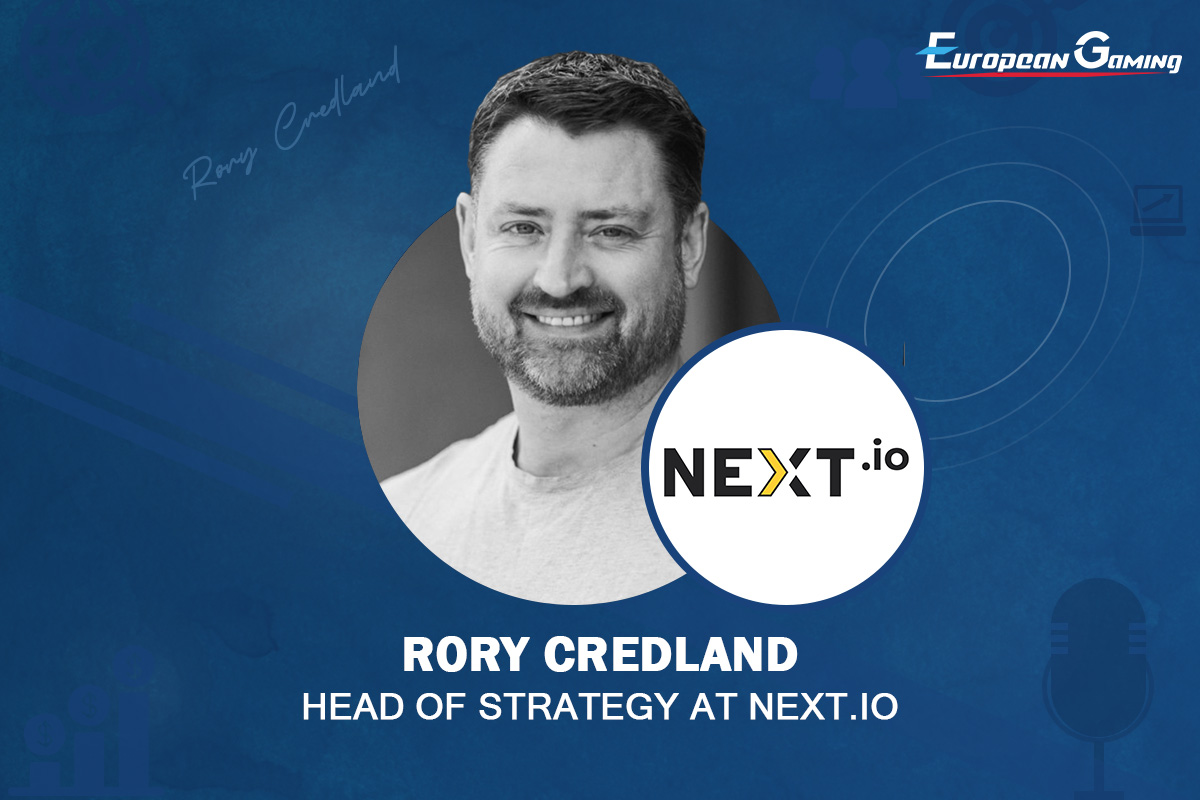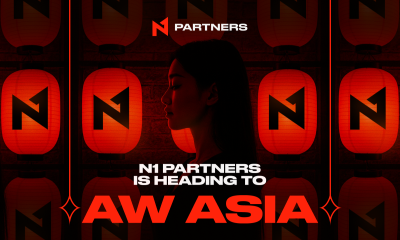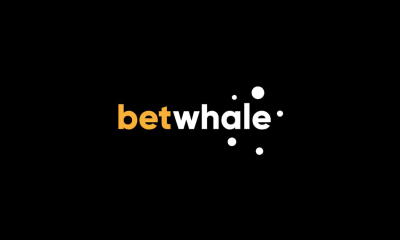Interviews
Exclusive Q&A w/ Rory Credland, Head of Strategy at Next.io

- Could you provide an overview of the upcoming Next.io summit in May?
We are hosting our 4th annual NEXT.io event in Valletta on 15 – 16 May. With a global delegation of 5,000 attendees, Valletta’24 is more than just a conference; it’s where groundbreaking ideas and innovations converge. In addition to the leadership stage, we host several side tracks on marketing, investment, HR, sustainability, technology, emerging markets/jurisdictions – plus a new track on personal development. As we expect over 5,000 attendees, we have also increased our networking space with a new hall dedicated to more exhibitors, entertainment area, lunch, and a chill-out zone. Finally, our recent partnership with Ask Gamblers will ensure greater affiliates and operators in attendance, so as you can see there is definitely something for everyone and the event promises to be one of endless connections and activities.

- What speakers or panelists can attendees expect to hear from during the summit?
We have tailored the event to make this event the pinnacle of the iGaming industry, offering unparalleled networking opportunities and insights from 300 industry-leading voices. We have many c-level speakers attending including Angus Nisbet, VP Gaming, BetMGM, gaming industry expert Paris Smith, Lahcene Merzoug, CEO. PressEnter, Francesco Postiglione, CEO, Casumo, Martina Akerlund, CEO, CallsU, Jeffrey Haas, Chief Growth Officer, William Hill, Todd Haushalter, CPO, Evolution Group, Tim Heath, General Partner, Yolo Investments plus an amazing keynote to kick off the start the event. We have two amazing keynotes to kick-start day 1 and 2 of the event, so I urge you to check out our agenda via
- Can you share any insights into the format of sessions and discussions planned for the summit?
We like to change the formats and concepts up at NEXT.io compared to the norm that you see at other organisers. For instance, we base our talks at 30mins max to ensure that it is short and sharp straight to the point discussions and a limited number of speakers on each session so that more interactive discussion and debate can be had. We also are putting the CEOs under the spotlight this year – think Mastermind – with each CEO – one by one – under a “spotlight” for 10mins with direct questioning from the host. Should be awesome and insightful.
- How does Next.io ensure diversity and inclusivity in the selection of speakers and participants for its summits?
Internally we take an active stance to ensure that there is a cross selection of speakers to this regard based on our own internal metrics. Wherever possible we encourage new speakers to be put forward by their organisations or through connections that we make – this allows for new and different perspectives on the discussion to hand which make the event and tracks interesting and informative for the audience.
- What unique networking or collaboration opportunities will be available to participants during the event?
For two years ago we have designed NEXT.io Valletta to be a festival week of iGaming, encouraging people to arrive for the week to take part in our activities we have on the Monday and Tuesday before attending the event on Wednesday. This year we have Golf, Padel, Run Club plus many networking events taking place from Tuesday through to Friday night, so check out the website where you will be able to find more information.
- How does Next.io leverage technology or innovation to enhance the summit experience for attendees, whether in-person or virtual?
We have a unique advantage hosting the event at the MCC in that the main stage is built like a theatre – so with use of such a big stage we can use LED screens which allow for animation and interaction on screen as well as several attendee applications which ensures they get directly involved with what session is taking place and have an input into the direction of the questioning.
- What motivated Next.io to choose Malta as the location?
NEXT.io head office is based in Malta, so it felt a natural fit to organise our flagship event within the country and at one of Malta’s iconic venues – The Mediterranean Conference Centre – with epic views over the harbour and Mediterranean Sea. When NEXT.io was formed the company had amazing support from the Maltese Gaming Authority who backed us at the time and so since day one we continue to use Malta to host what we feel is becoming an event on everyone’s calendars.
- How does Next.io ensure that its summits provide a platform for emerging voices and perspectives alongside established leaders and experts?
As mentioned previously we like to continuously promote not only the established experts but also the leaders of tomorrow. Our Advisory Board is instrumental in that regards as they also have an ear to the ground as to whom is best to suggest for topics and discussions. I think what works best is a mix of experience and new to crate that interesting discussion on stage.
- How does Next.io plan to capture and share the insights and outcomes from the Malta summit to extend its impact beyond the event itself?
We record our main stage sessions and use this through our awesome marketing to promote the event long after it is over via access on our news part of the website. In fact, we never see an event having an “end” more of a continuation to the next show as we promote what was and what is new for the following year. Continuous dialogue with our audience and clients is important to ensure consistent messaging and allows us to react to what market forces are in play at the time.
The post Exclusive Q&A w/ Rory Credland, Head of Strategy at Next.io appeared first on European Gaming Industry News.
HIPTHER
How to Write a CV that Attracts Top Employers – Insights by Valeriia Virchenko, Head of Talent Acquisition at RedCore

Reading Time: 4 minutes
European Gaming Media joined RedCore and Valeriia Virchenko, Head of Talent Acquisition, at their SiGMA Central Europe booth in Rome to discuss a topic that resonates with every ambitious professional: how to write a CV that truly stands out to top employers.
As an accomplished recruitment leader with extensive experience across continents – from Europe to Latin America, Africa, and Asia – Valeriia brings a global perspective on what leading companies seek in candidates today. Under her leadership, RedCore’s talent acquisition strategy continues to attract and develop exceptional professionals across tech, marketing, and fintech.
Interview by Maria Emma Arnidou, HIPTHER – European Gaming Media
Valeriia, from your experience leading large-scale recruitment projects across international markets, what makes a CV truly stand out to top employers today?
First of all, thank you for the invitation. From my experience, what really makes a CV stand out is when candidates clearly show their results and impact. Top companies want evidence of what you achieved, not just a list of responsibilities. It’s important to include metrics or numbers – for example, not just “I managed a large team,” but “I led a team of 15 and increased results by 20%.” These details matter. Employers want to see how your experience directly helped solve problems or improved something within the company.

What are the most common mistakes candidates make when writing their CVs, and what advice would you give them to avoid these pitfalls?
This is a big topic, but in my opinion the most common mistake is that some CVs are simply too long. Hiring managers can only scan a CV briefly, so two pages, three at most, is enough. Writing a very long CV is a major mistake. Another point is simple but often overlooked: candidates really need to proofread their final draft. Small errors and little details matter because they show whether someone is attentive and pays attention to detail.
When reviewing applications at RedCore, what qualities or signals do you look for that show a candidate is ready to grow within a fast-paced, innovation-driven environment?
We mainly look for two things. The first is adaptability – people who can adjust quickly to change. The second is a genuine love of learning. We prefer hiring people with a growth mindset. How fast someone can learn new tools or approaches is very important for us, because our industry is extremely dynamic. If a person doesn’t like learning or isn’t open to new technologies, it becomes difficult to work together in such an environment.
On a CV, it helps a lot when candidates highlight this. If you started a new project, learned a new tool quickly, or solved a significant problem at work – mention it. These signals show us that you’re ready to grow with us.
RedCore is actively hiring specialists across various sectors – also C-level professionals. What can experienced candidates expect when joining your organization in terms of career growth and support?
We can talk about perks, benefits, high salaries – and of course we have all of that – but so does everyone. What I really want to highlight, especially for C-level candidates, is something different. If you look at our booth here at SiGMA Central Europe, you can see how big it is – because it houses the many brands : Mr. Booster, Frogo, PayPartners, and others. Each of these brands has its own C-level professionals, and these leaders grow inside our company.
What we offer C-level professionals is ownership and creative freedom: the opportunity to act like business owners. They can take a product from idea to market, understand what needs to be done, build the right sales strategy, and really drive the product forward. They get the freedom and responsibility of running a business, but in a comfortable environment and with minimal risk. You can focus purely on growth and vision.
And one more thing that’s very important for us: we always welcome C-level candidates to visit our booth at expos. We want to meet them, to get to know them, even if they are not actively looking for a new role right now. There are always opportunities, and we are always open to talent.

Finally, for those aspiring to join global companies like RedCore, what’s your number one piece of advice for crafting a CV that stands out and secures an interview?
Be very clear about your sector. If you work in fintech, iGaming, healthcare – mention it right away, because it immediately gives us an understanding of your background. These industries are not the same, and this context matters. The same goes for technical roles: if you’re a developer, list your full tech stack clearly. Which technologies, which tools – everything should be easy to find.
Structure and presentation are also important. It’s better to build your CV using a proper layout tool like Canva or Tilda, rather than leaving it as a plain Google Doc. Think of it like a user journey: recruiters and hiring managers should instantly know where to find the right information about you.
And finally, include a photo: a simple, professional portrait. Sometimes we see funny photos, and that’s not the impression you want to give when applying to a global company. You don’t need a studio shoot; even a phone photo taken against a white or grey wall is enough. People want to see who they might be working with in the future.
Thank you, Valeriia, for sharing your valuable insights on building a career-ready CV and giving us a closer look into RedCore’s approach to talent and professional growth.
RedCore is hiring – View the job openings & build your dream career with them!
Stay tuned for more exclusive interviews from SiGMA Central Europe 2025, brought to you by European Gaming Media, your trusted source for insights at the intersection of iGaming, tech, and innovation.
The post How to Write a CV that Attracts Top Employers – Insights by Valeriia Virchenko, Head of Talent Acquisition at RedCore appeared first on European Gaming Industry News.
Danny Gordon Director of Games at DEGEN Studios
DEGEN’s Creative Charge: Danny Gordon on Disruption, Player-First Design and the Future of High-Voltage iGaming Content

Reading Time: 3 minutes
Introduction
DEGEN Studios has quickly carved out a reputation as one of the sector’s boldest emerging forces, delivering high-volatility content designed for players who want every spin to feel alive. As the studio prepares for its next phase of accelerated growth, European Gaming sat down with newly appointed Director of Games, Danny Gordon, to explore his journey through some of the industry’s most influential creative environments and understand why DEGEN’s vision resonates so strongly with him.
With close to ten years across Microgaming, Entain and Four Leaf Gaming, Danny brings a rare blend of analytical expertise, product design insight, and a creative instinct shaped by building successful in-house studios from the ground up. In this exclusive interview, he shares what drew him to DEGEN, how he defines player-first development in a crowded market, and why the biggest opportunities now lie in high-energy content that is unafraid to take risks.
First of all, can you introduce yourself and tell us about your background?
Danny Gordon, and I’ve been working in iGaming for the best part of a decade now. I started my career at Microgaming, working as a publisher and moved onto a business analyst.
In 2020, I made the move to Entain, where I initially worked as a Games Designer. This really allowed me to explore the creative side to slot games. I then created the newest in-house studio Vertical Games in 2022 initially as a label to break the mould of in house content, which evolved to a fully funded in house studio.
There, I worked alongside an amazing team and created a range of innovative slot games that I’m really proud of. After two years in the role, I became Director of Games at Four Leaf Gaming, further mastering my craft before joining DEGEN.
What was it that attracted you to DEGEN Studios?
The energy. DEGEN is a brand with a clear mission: disruption. The company’s approach to gaming is bold and innovative, and I can’t wait to start bouncing ideas off with the team.
I believe the company want to do something totally different, and on a professional level, this presents an exciting challenge for me. Creative freedom is essential in my role, and DEGEN is a brand that will allow my creativity to flourish.
How would you describe your approach to game development?
Player-first.
My approach to game development has always been player-first and DEGEN’s for players, by players philosophy really resonated with me, it was created by gamers who live and breathe this world, and that perspective shapes every slot we make. We design from the inside out, asking: how does it feel, how does it hit, what makes it unforgettable?
I also believe collaboration is key. The best ideas can come from anywhere, and my job is to create a space where those ideas can grow and evolve into something special. There’s no hierarchy at DEGEN, we’re a team with a shared vision and a shared passion for making games that genuinely excite people.
What’s your take on the current state of iGaming, and where do you see the biggest opportunities for innovation?
There’s a lot of great work happening across iGaming, but I think there’s still a real gap when it comes to truly high-volatility, high-energy content. Many studios are focusing on what’s proven to work, which makes sense commercially, but it leaves room for innovation. Players today want experiences that feel different, games that take risks and deliver real adrenaline.
That’s where DEGEN stands out. We’re focused on exploring mechanics and themes that break routine. For us, innovation means making every spin feel alive – unpredictable, bold, and built around the player’s excitement. That’s the space I see as the biggest opportunity right now.
What can we expect from DEGEN in the coming months?
While I can’t reveal any specific details, let me just say that you can expect DEGEN to turn up the volume even louder with their next few releases. DEGEN’s original slate of titles has already been a huge hit, but these are only a taste of what the studio is capable of.
Our focus is on continuing to evolve and deliver experiences that truly engage players. The next wave of games builds on everything we’ve learned so far – deeper concepts, bolder ideas, and afresh energy running through each release. For DEGEN Studios, this is only the start.
I’m equally as excited about what we can deliver from a product roadmap POV as much as the content roadmap and all I can say is watch this space!
Looking further ahead, where do you see DEGEN Studios positioned in the market five years from now?
I want DEGEN to be a name people instantly associate with innovation, disruption, and quality. We have a clear roadmap to success, and we are not wasting any time in implementing it. Whenever a new DEGEN game is released, it should feel like an event.
We are already building a loyal player base that will undoubtedly play its part in helping us build our future, and we cannot wait to see what the coming years bring.
The post DEGEN’s Creative Charge: Danny Gordon on Disruption, Player-First Design and the Future of High-Voltage iGaming Content appeared first on European Gaming Industry News.
B2B Marketing Team of the Year
Inside the Mind of an Industry Leader: SOFTSWISS CMO Valentina Bagniya on Team Building, Creativity, and Global Growth

Reading Time: 6 minutes
This year marked significant progress for the SOFTSWISS marketing function – new initiatives, new markets, and recognition through four major marketing awards, including Marketer of the Year and B2B Marketing Team of the Year. To better understand your path as a leader, let’s go back to where it all began. What brought you into marketing, and what ultimately inspired your move into iGaming?
Oh, this question takes me way back. I grew up in a family where both of my parents studied in the Faculty of Philosophy. So, when it came time for me to choose a university and a field of study, their academic background definitely played a role – it stayed with me and influenced my thinking. That’s why I also decided to apply to the Faculty of Philosophy.
But I never really saw myself as a philosopher. One of the departments within the faculty was quite new – it had only been established a few years earlier. It was called ‘Information and Communication’. When I read the programme description and visited the university for the open day, I realised that the department was closely connected to advertising, marketing, and PR. And that sparked a huge interest in me. I thought, “This is great – I should give it a try!” Back then, I honestly thought marketing was mostly about creating commercials. That was the image I had.
So that’s how I ended up studying at the Faculty of Philosophy, in the Information and Communication department – and that’s where I got my first real introduction to marketing. Though in reality, I didn’t go into pure marketing right after graduation. My first job was actually in analytics. I worked as an analyst first in a consulting company, and then at British American Tobacco.
To be honest, I think that was probably the best possible starting point for someone entering the marketing field. Understanding the value of data and analytics is absolutely critical and fosters strategic thinking. Many people, even those working in the industry, still see marketing primarily as something purely creative and imaginative. But to create truly impactful campaigns, you have to work precisely with numbers, data, and research. You must think about the strategy based on the data first, and only after that, think about the bright execution.
So,I could say my parents led me into marketing.
Leading a marketing team of more than 70 people at SOFTSWISS requires a thoughtful approach to talent management. What qualities do you prioritise when shaping a team of this scale?
Let’s probably start with the basics.
At the foundation of any strong team are professionals who are capable of doing their jobs well. That’s why it’s important for me to make sure that the people I bring onto the team possess the necessary hard skills in their respective fields.
However, even more important to me are personal traits and qualities. There are a few things I pay particular attention to.
First and foremost – responsibility: the ability to take ownership of one’s actions, decisions, and their consequences, and to understand how those decisions affect the company, our clients, and the team as a whole.
Second – ambition. To me, being ambitious means not settling for the safe or easy route. It’s about setting bold goals and having the drive to achieve them. I truly believe that ambitious people drive progress – they push themselves and others forward, helping the company grow and achieve meaningful results.
Closely related to this is a results-oriented mindset. It’s easy to fall into a routine of just completing tasks, forgetting that each task exists to serve a bigger purpose: to create an impact for the business. A bold, creative campaign might look great on the surface, but what really matters is whether it delivered business results and made a tangible difference. So I would even rephrase that: it’s not just about focusing on results – it’s about understanding what those results mean for the business and aligning your actions with that.
When we talk about building a team, I also consider collaboration and team cohesion. In a large team, it’s critical to understand that there aren’t just “my” goals or “someone else’s” goals – there are our goals. Supporting one another and working as a unified whole is essential. Team members who are engaged and involved contribute to high performance and shared success.
I also value qualities like curiosity, because without the desire to learn, ask questions, and explore new ideas, it’s hard to grow. I look for creativity, the ability to go beyond the obvious, to bring fresh perspectives and non-standard solutions. And finally, I’d add proactiveness and courage, which in many ways go hand in hand with ambition. These are the key qualities I look for when I’m building a team.
What inspires you?
What inspires me?
I’d probably name two things. The first is the people I work with. This includes my leaders, those who set ambitious goals, grant their trust and support in the process of achieving them, and give me space to evolve. And of course, it’s my team, the people I work with every single day. Watching how they overcome challenges and grow beyond what they thought was possible is incredibly energising. Sometimes they don’t even believe they can do something – and then they face their fears, push through, and deliver amazing results. That kind of transformation truly inspires me.
Second – I’m naturally a goal-driven person. I’m deeply inspired by achievement – both my team’s and my own. iGaming is an industry where you see the impact almost immediately – the feedback loop is fast, the competition strong, and the bar always rising. That energy is inspiring.
So yes – it’s the people and the results we achieve together that inspire me the most.
Let’s talk about a couple of projects/work you are proud of. What makes them special to you?
Well, I’d say the one I’m most proud of is the team I’ve built from scratch at the company where I currently work. This team played a key role in helping me elevate SOFTSWISS from a local brand to the international stage, turning it into one of the most respected and influential names in the iGaming industry.
When it comes to marketing campaigns that stand out and make me proud, one in particular comes to mind: our “Bringing the Heat” campaign. It was a game-changer – it challenged the more traditional approach in B2B iGaming marketing and helped SOFTSWISS take the lead.
The campaign received multiple awards, and its strength came from two factors. First, we used an unconventional creative approach – something you’d typically see in FMCG or emotional consumer brands, not in B2B tech. It was bold, vivid, and emotionally engaging.
Second, the channel mix we used was truly unique for the B2B space. Instead of relying solely on traditional digital channels, direct mail, and sales outreach, we took into account the unique character of the Maltese market, where the campaign was launched. Given that a significant portion of the population in Malta works in iGaming, we decided to go much broader – incorporating out-of-home advertising, radio, and even BTL activations.
The result? A significant boost in brand awareness and – just as importantly – in actual business results. Today, this campaign is seen as a benchmark in B2B marketing within iGaming, and we’ve already noticed other companies following the same path.
What advice would you give to people starting out in the industry today?
I have a pretty long list, but it’s doable, believe me.
- Develop strategic thinking and the ability to think big.
- Enhance your emotional intelligence to establish effective relationships with key stakeholders and empower your team.
- Be proactive and persistent – this will help you achieve the hardest goals.
- Develop adaptability and the ability to pivot and navigate uncertainty when the context changes.
- Be technology and analytics-savvy.
- Learn from everything and everywhere, especially from mistakes, whether your own or others’, as this is about creating and cultivating a growth mindset.
- Attend industry events, learn how different markets work.
- And don’t underestimate the importance of understanding compliance and regulations. They shape how marketing can and should function in iGaming.
What challenges and opportunities do you see for marketing teams in iGaming going forward?
Marketing today faces a paradoxical situation: we’ve never had more tools, channels, and data – and yet never faced more complexity in connecting meaningfully with people.
The biggest challenge? Consistency.
The pace of change tempts teams to chase everything – every trend, every new platform, every buzzword.
But the brands that win will be the ones that simplify. That stands for something clear, consistent, and relevant across markets and generations. Focus and consistency are the new superpowers.
Another challenge is trust.
Consumers and customers are more sceptical than ever, especially in iGaming. One misstep can become global in minutes. So building brand trust is not a campaign – it’s a discipline. And it must be rooted in real action: in how we show up, the values we live by, and the impact we create.
The opportunity?
To continue with the classic way of marketing, where strategy comes first. Marketing teams that combine creativity, empathy, and strategic focus with smart use of technology won’t just adapt – they’ll lead.
The post Inside the Mind of an Industry Leader: SOFTSWISS CMO Valentina Bagniya on Team Building, Creativity, and Global Growth appeared first on European Gaming Industry News.
-

 BGaming6 days ago
BGaming6 days agoWeek 47/2025 slot games releases
-

 Australia6 days ago
Australia6 days agoVGCCC: EGM Application Improvements Consultation
-

 Balkans6 days ago
Balkans6 days agoEGT to reveal advanced Supreme cabinets and multigame mixes at BEGE Expo 2025
-

 8MBets7 days ago
8MBets7 days agoHimalayan Harmony Group Unveils Partnership with Some of Nepal’s Most Trusted Online Casino Brands
-

 Compliance Updates6 days ago
Compliance Updates6 days ago“Get Your Life Back, Stop Gambling” Campaign Wins Bronze Effie Worldwide Award
-

 Latest News6 days ago
Latest News6 days agoN1 Partners at Affiliate World Asia 2025: The Place Where Top Deals Come True
-

 sportsbook6 days ago
sportsbook6 days agoBetting Bonuses and Sportsbook Promos for 2025: BetWhale Redefines Online Sportsbook Rewards with 200% Welcome Offer
-

 Snoqualmie6 days ago
Snoqualmie6 days agoSnoqualmie Casino & Hotel and 100.7 The Wolf Raise over $400,000 for Veterans at “The Wolf’s Operation K9 Companion” Benefit Concert Featuring Chris Janson









